I'm given to understand the higher the ISO level the grainier the picture, is this right? If so, what situation would require a higher setting please? I've noticed a few photos where the main setting was ISO 100-200, I've not yet come across a photo using a higher setting, is there any situation where I'd need the much higher settings available? Thank you in advance for any advice you can give.
and the site receives a small commission
You are using an out of date browser. It may not display this or other websites correctly.
You should upgrade or use an alternative browser.
You should upgrade or use an alternative browser.
ISO levels?
- Thread starter Shnarf76
- Start date
- Messages
- 703
- Edit My Images
- Yes
Low light levels without a flash where you cannot have a long shutter speed.
Low light levels without a flash where you cannot have a long shutter speed.
Thank you for the reply, how do you counteract The graininess (is that even a word?) of higher ISO settings or is it negligible?
Thank you for the reply, how do you counteract The graininess (is that even a word?) of higher ISO settings or is it negligible?
Change your ISO and look at how it effects the exposure and grain, best way to learn is to try it for yourself or use your camera in different light levels with flash off.
^^ What he said.Low light levels without a flash where you cannot have a long shutter speed.
Think of ISO like a volume knob - if the music (light) is too low, crank it it - the downside being you will get some distortion ( or noise / grain in the case of ISO).
If you're trying to take a photo of someone in a dimly lit room and you don't want to use additional lighting, there are three ways to deal with it...
1. Use a longer exposure time (slower shutter speed) so there more time for the limited light to enter the camera. The downside of this is if you use too long an exposure, the person may move and you will get a blurry picture.
2. Use a wider aperture (a bigger hole!) to let more light in - you may already be using the widest for example, so where do you go... (there are other reasons you may not want to adjust this)
3. Crank up the ISO to amplify the light readings.
Just one scenario, but assuming I'm already using the maximum aperture, the choice I have is a blurry photo or one with a bit more grain - usually, the grainy one is the better choice!
Last edited:
- Messages
- 5,258
- Name
- Lee
- Edit My Images
- Yes
Carrying on..... (as the basics have already been covered) ...... It's not so much noise I dislike in my images, it's the colours that always appear alongside the noise.
I don't mind some noise in B&W (excluding landscape) but I'm sure in LR within the "Noise" section there is a slider for 'colour'
The most important thing though. A noisy image is better than a blurry image
I don't mind some noise in B&W (excluding landscape) but I'm sure in LR within the "Noise" section there is a slider for 'colour'
The most important thing though. A noisy image is better than a blurry image
- Messages
- 11,785
- Name
- Jeremy Moore
- Edit My Images
- No
Although it can be seen as equivalent to grain, it is actually digital "noise". You remove it in your software.
The larger the size of the sensor in your camera, the less noise you will get, and the higher the ISO at which it will appear.
ISO, shutter speed and aperture are the three variables for correct exposure in digital photography. It is a matter of finding the right combination for your subject matter and the amount of light available.
The larger the size of the sensor in your camera, the less noise you will get, and the higher the ISO at which it will appear.
ISO, shutter speed and aperture are the three variables for correct exposure in digital photography. It is a matter of finding the right combination for your subject matter and the amount of light available.
DG Phototraining
Woof
- Messages
- 5,064
- Name
- Dave
- Edit My Images
- Yes
Many many years ago grainy/noisy photos were well liked, now some folk just don`t like it in their photos. For me if I want the shot then I`d rather have an in focus noisy image than a out of focus shot.
Noise doesn't affect focus, I think you mean blurred due to movement i.e. camera shake, subject movement or both; where the subject is actually in focus but blurred due to movement
I'm not correcting to be arsey just to clarify for the OP - I'm sure you know you just phrased it wrongly
Dave
Fuji Dave
I'm in Clover
- Messages
- 22,088
- Name
- Dave
- Edit My Images
- No
Noise doesn't affect focus, I think you mean blurred due to movement i.e. camera shake, subject movement or both; where the subject is actually in focus but blurred due to movement
I'm not correcting to be arsey just to clarify for the OP - I'm sure you know you just phrased it wrongly
Dave
I have never really been great with how to say some things, but yes just as you put it for the OP is what and how I was thinking ( Just said it wrong way round )
- Messages
- 7,701
- Edit My Images
- No
To get a feel for this, have a look at some reviews of your camera and then do your own experiments. Cameras vary quite a lot on how noisy a high ISO image is, depending on the properties of the sensor, and what processing is done in-camera. You may have noise reduction settings in your camera menu, and any software you use to process the image afterwards will probably offer further options (especially if you shoot raw). Here are some examples from one review of the 1300D you mention in your profile:
https://www.photographyblog.com/reviews/canon_eos_1300d_review/image_quality/
Noise is pretty crazy at the highest ISO 12800 setting, and high at 6400, but it does well below about 1600, though there are improvements the lower you go. Where you draw the line on an acceptable level of noise depends on your own tastes, how much processing you intend to do afterwards, and how much choice the specific shot offers you. In very dim light, when you are already using the widest aperture and lowest shutter speed you can get away with, even a 12800 ISO shot may be better than no usable shot at all.
For a general understanding of how various combinations of aperture, shutter speed and ISO affect your images, it may be helpful to play with this:
http://www.canonoutsideofauto.ca/play/
https://www.photographyblog.com/reviews/canon_eos_1300d_review/image_quality/
Noise is pretty crazy at the highest ISO 12800 setting, and high at 6400, but it does well below about 1600, though there are improvements the lower you go. Where you draw the line on an acceptable level of noise depends on your own tastes, how much processing you intend to do afterwards, and how much choice the specific shot offers you. In very dim light, when you are already using the widest aperture and lowest shutter speed you can get away with, even a 12800 ISO shot may be better than no usable shot at all.
For a general understanding of how various combinations of aperture, shutter speed and ISO affect your images, it may be helpful to play with this:
http://www.canonoutsideofauto.ca/play/
Last edited:
- Messages
- 16,732
- Name
- Keith
- Edit My Images
- No
Gig photography springs to mind for me, I used to shoot gigs for local bands and you had no real choice but to pump it to 3200+ and cameras then were nowhere near as good at handling noise. I used a D90 at the time and for my general shooting didn't like going above 800. But when shooting gigs that went out the window, I needed 2.8 glass at least, just to keep the ISO in around 1600 - 3200. Good thing is grain or noise doesn't look bad for gig shots, it can enhance them, add character, a 'punkiness' - and they look better in B&W often as others mentioned.
Where else would you need to push the ISO? weddings, in dimly lit churches where flash is not permitted, street shooting at night, again where flash isn't ideal, astro-photography, any type of indoor scenario where you don't have or it's not ideal to use flash. Most cameras these days are well capable of producing decent quality images up to 3200, it's only when you check them at 100% or more [pixel peeping] that you really see the gran. And it's easy to clean up with the latest softwares.
Found some examples of those old gig shots on my flickr, and seems i was a bit mean to the ol' D90, it handled 3200 pretty well considering it's age. I would have cleaned this up in post, but the image is still sharp enough for what it is
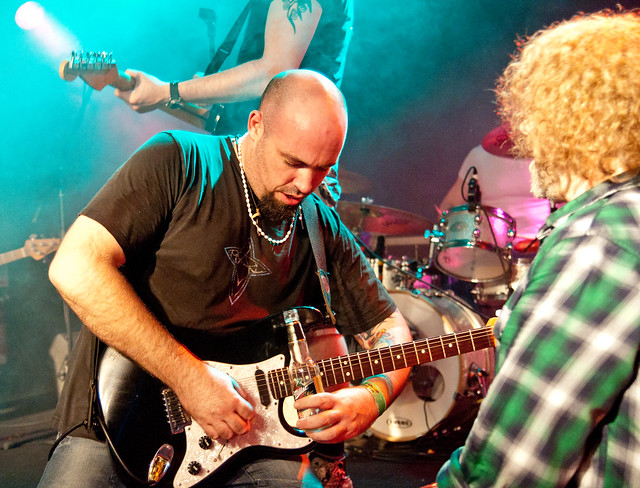 Pearl Jem @ Swan lane, Navan, Co. Meath by K G, on Flickr
Pearl Jem @ Swan lane, Navan, Co. Meath by K G, on Flickr
Where else would you need to push the ISO? weddings, in dimly lit churches where flash is not permitted, street shooting at night, again where flash isn't ideal, astro-photography, any type of indoor scenario where you don't have or it's not ideal to use flash. Most cameras these days are well capable of producing decent quality images up to 3200, it's only when you check them at 100% or more [pixel peeping] that you really see the gran. And it's easy to clean up with the latest softwares.
Found some examples of those old gig shots on my flickr, and seems i was a bit mean to the ol' D90, it handled 3200 pretty well considering it's age. I would have cleaned this up in post, but the image is still sharp enough for what it is
 Pearl Jem @ Swan lane, Navan, Co. Meath by K G, on Flickr
Pearl Jem @ Swan lane, Navan, Co. Meath by K G, on Flickr
Last edited:
- Messages
- 475
- Name
- Jim
- Edit My Images
- Yes
It's easy too get too hung up on high ISO settings and noise...it's quite often not the noise/grain that's the problem - it's the noise reduction. It quite often looks a lot worse than the actual noise and results in some horrible colours and loss of detail. Generally, the bigger/better the sensor, the less noise and the less need for reduction. Even then, imo I'd much rather have noise/grain over bad noise reduction; you end up with more detail and a more pleasing overall image.
But even then, I have some gig photos printed at 7x5 from an rx100 (mk1) at 3200 that look fine, with whatever the camera set for jpeg. On screen there's some details lost but it's much better to have the picture a bit less than perfect than a blurred as s*&t one trying to capture something with a 'clean' iso setting.
But even then, I have some gig photos printed at 7x5 from an rx100 (mk1) at 3200 that look fine, with whatever the camera set for jpeg. On screen there's some details lost but it's much better to have the picture a bit less than perfect than a blurred as s*&t one trying to capture something with a 'clean' iso setting.
woof woof
I like a nice Chianti
- Messages
- 39,580
- Name
- Alan
- Edit My Images
- No
Thank you for the reply, how do you counteract The graininess (is that even a word?) of higher ISO settings or is it negligible?
You can try -
- Applying noise reduction either in camera or post capture on your pc using your software of choice.
- Expose to the right and back it off post capture.
- Try to fill the frame and resist cropping and still viewing / printing BIG.
- Resize the picture for final viewing and try to stop yourself from pixel peeping.
I have a 1" sensor compact, a couple of Micro Four Thirds cameras and a "FF" Sony A7 and I use them all at any ISO required and usually the end result is useable after only basic processing and noise reduction and possibly resizing too.
Last edited:
- Messages
- 8,981
- Name
- Rob Telford
- Edit My Images
- No
Shooting RAW allows a little further latitude and control in PP, rather than relying on the built in noise reduction of your camera's JPEG engine.
If you are using Adobe Lightroom, the sharpening masking slider will allow you to concentrate sharpening only in the areas where there is detail to be sharpened, so you won't unnecessarily be sharpening noise in areas of plain colour. I tend to go easy on the noise reduction sliders, though, rarely straying above 10 or 15.
One thing that has not been mentioned yet is that sensors tend to lose dynamic range as you raise the ISO - the number of tones that can be captured between and absolute black and absolute white reduces. This is one of the reasons why going to monochrome can be more successful; if you to pull down the exposure and drop the dark tones to a flat black, you preserve more of the the remaining tones you have available for the important stuff, like people's faces.
As mentioned by some other people already on this thread, gigs are a particular challenge; especially in smaller venues the lighting can be quite poor.
A lot of the impact of noise will depend on the quality of the light you are working with - where it is and how it is directed, even if the absolute levels are low - and that can be pot luck.
I am not afraid of cranking it up a bit and using b/w (though I often shoot for monochrome regardless of lighting conditions. Unless I'm after a particular effect, whatever focal length I am using, I like to keep my shutter speeds at or above 1/100s to avoid movement blur in the performers.
ISO 2500
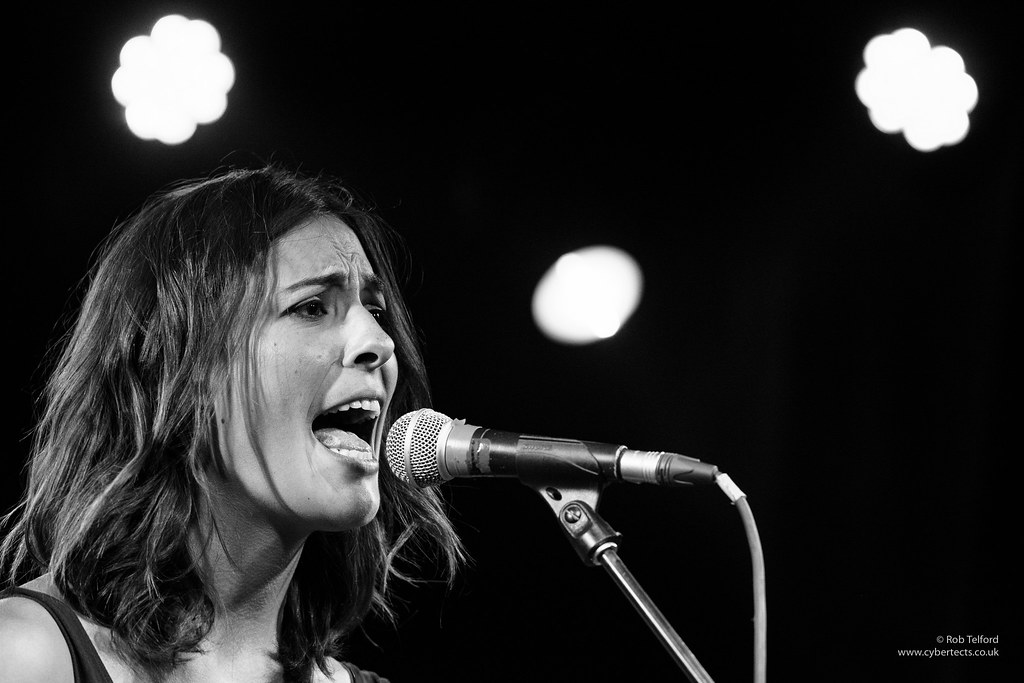
Rebecca Van Cleave by Rob Telford, on Flickr
ISO 4000
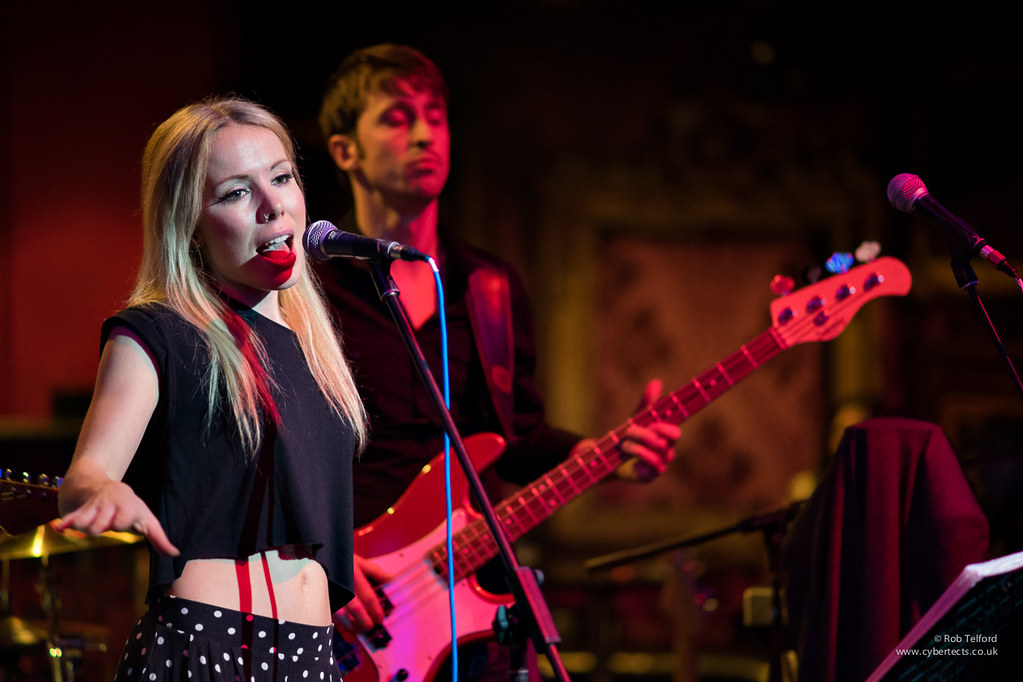
Band with no name by Rob Telford, on Flickr
ISO 6400
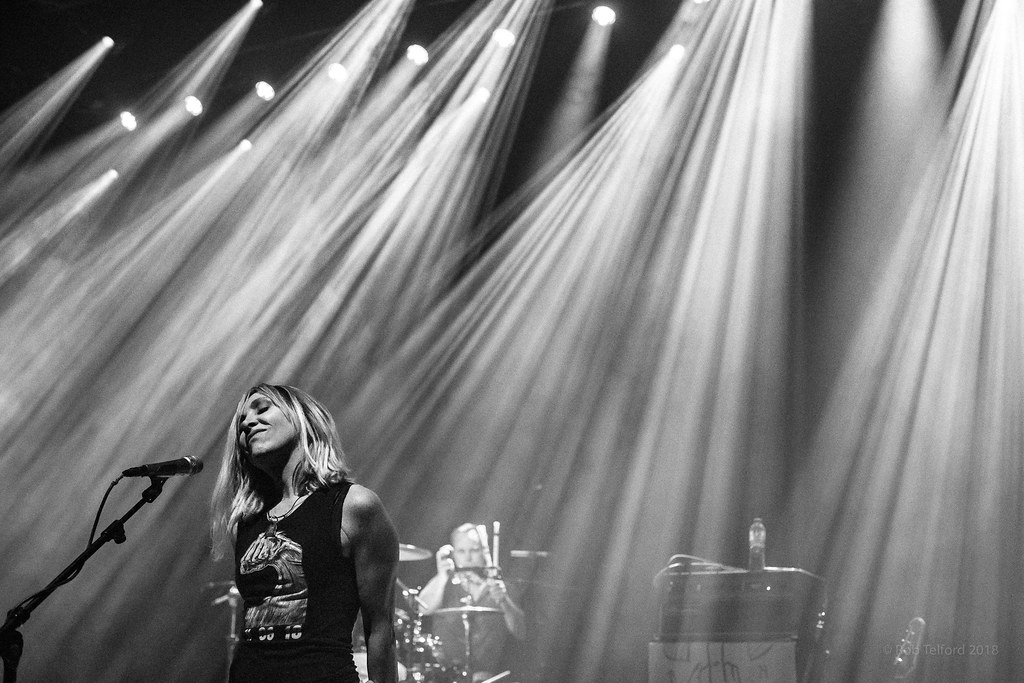
Gail Greenwood by Rob Telford, on Flickr
ISO 20000
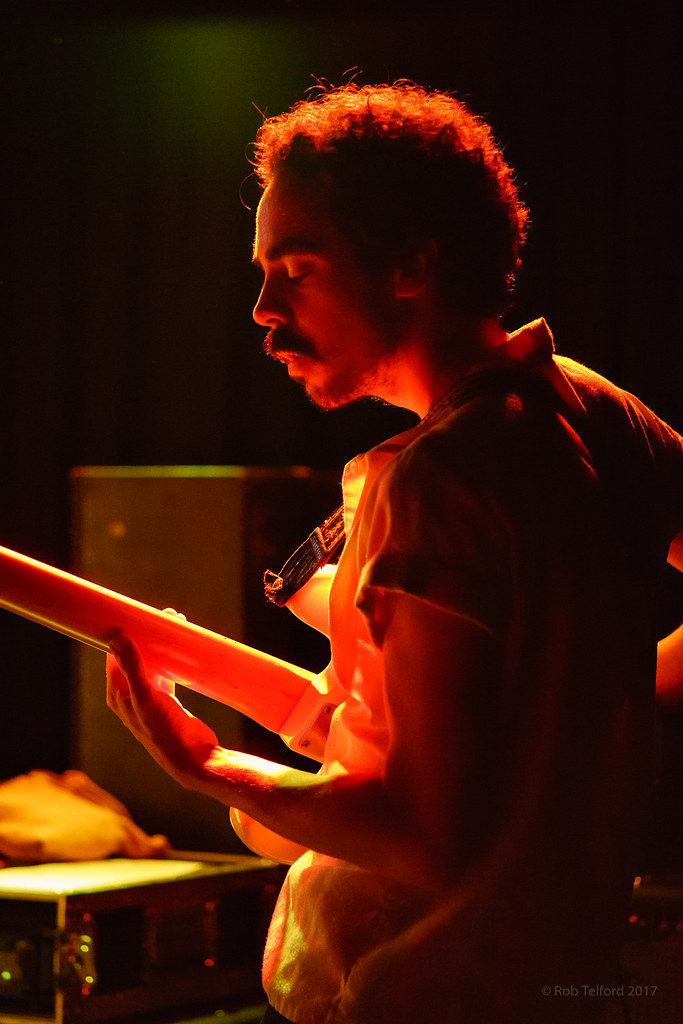
Rolling Blackouts CF by Rob Telford, on Flickr
ISO 25600
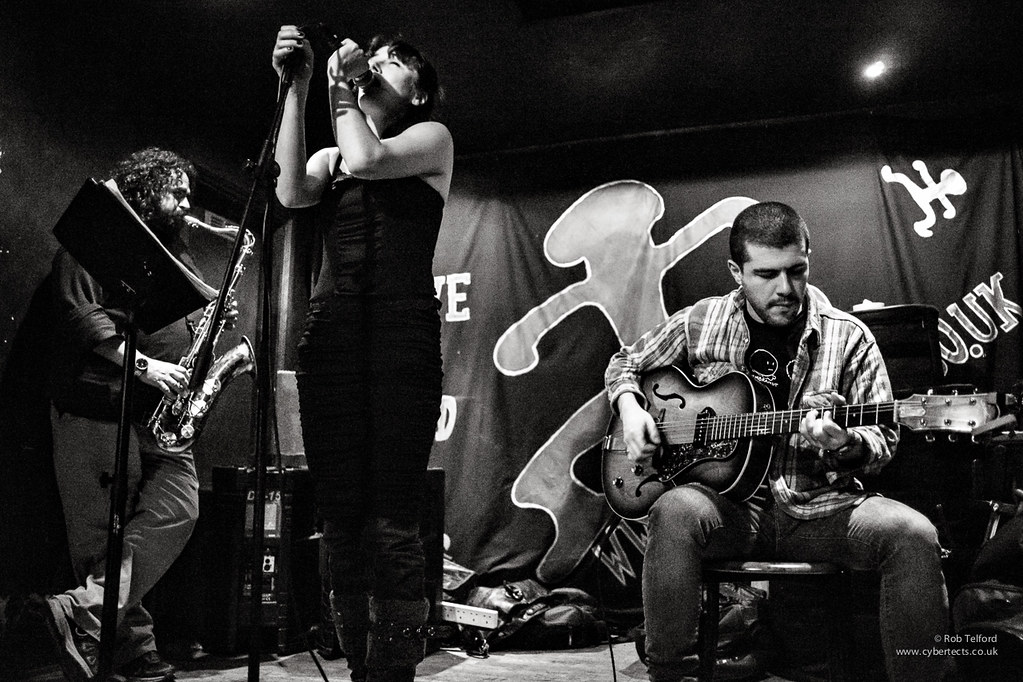
Maria Ahearn by Rob Telford, on Flickr
If you are using Adobe Lightroom, the sharpening masking slider will allow you to concentrate sharpening only in the areas where there is detail to be sharpened, so you won't unnecessarily be sharpening noise in areas of plain colour. I tend to go easy on the noise reduction sliders, though, rarely straying above 10 or 15.
One thing that has not been mentioned yet is that sensors tend to lose dynamic range as you raise the ISO - the number of tones that can be captured between and absolute black and absolute white reduces. This is one of the reasons why going to monochrome can be more successful; if you to pull down the exposure and drop the dark tones to a flat black, you preserve more of the the remaining tones you have available for the important stuff, like people's faces.
As mentioned by some other people already on this thread, gigs are a particular challenge; especially in smaller venues the lighting can be quite poor.
A lot of the impact of noise will depend on the quality of the light you are working with - where it is and how it is directed, even if the absolute levels are low - and that can be pot luck.
I am not afraid of cranking it up a bit and using b/w (though I often shoot for monochrome regardless of lighting conditions. Unless I'm after a particular effect, whatever focal length I am using, I like to keep my shutter speeds at or above 1/100s to avoid movement blur in the performers.
ISO 2500

Rebecca Van Cleave by Rob Telford, on Flickr
ISO 4000

Band with no name by Rob Telford, on Flickr
ISO 6400

Gail Greenwood by Rob Telford, on Flickr
ISO 20000

Rolling Blackouts CF by Rob Telford, on Flickr
ISO 25600

Maria Ahearn by Rob Telford, on Flickr
Last edited:

